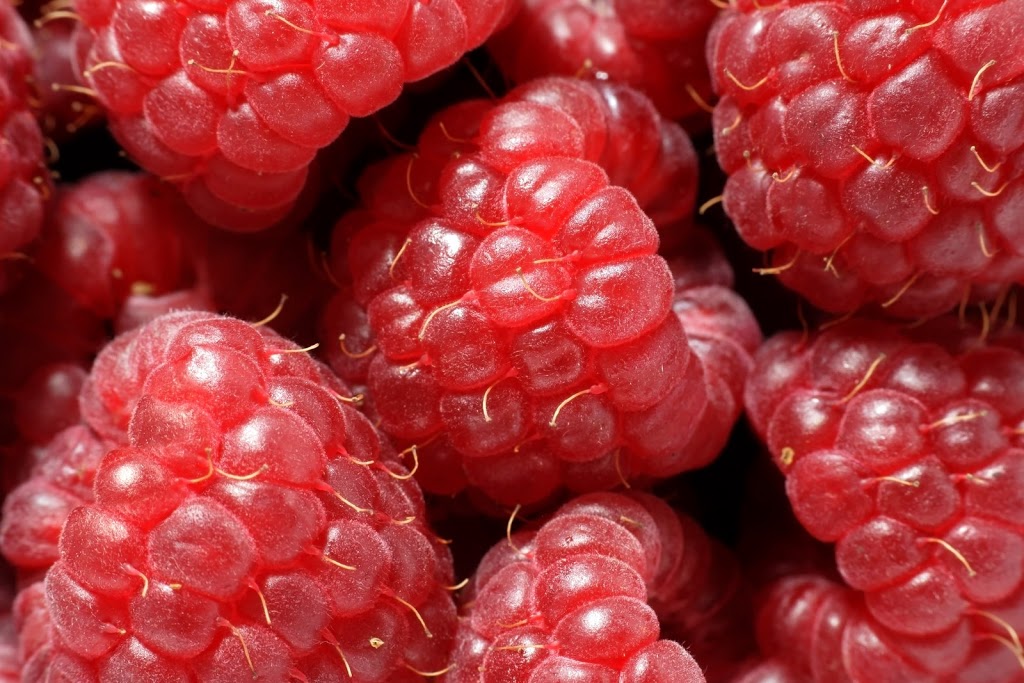1. Eat More Fruits and Vegetables
Fruits and vegetables offer fiber, vitamins, minerals and are naturally low -fat. In addition, for menopausal women, plants have chemicals called phytoestrogens that are similar in structure to estrogen. These naturally occurring chemicals may trick your body into thinking it has more estrogen than it really does, diminishing some of the discomforts caused by lower estrogen levels during menopause. The mineral boron is another beneficial element of fruits and vegetables. Boron is a mineral found in fruits and vegetables that helps the body to hold onto estrogen and decreases the amount of calcium we lose each day.
(One caveat: There are estrogen-sensitive cancers and until more is known, if you have or recently have had estrogen-dependent cancer, do not consume phytoestrogen-rich foods daily).
Fruits – Plums and prunes, Strawberries, Apples, Tomatoes, Pears , Grapes, Grapefruit, Oranges, and Red raspberries
Vegetables – Asparagus, Beets, Bell peppers, Broccoli stems, Cabbage, Cauliflower, Carrots, Cucumbers, Lettuce, Onions, Soybeans, Sweet potatoes, Turnips, Wheat
2. Eat Beans More Often
Beans are a nutritionally efficient food because they offer many health benefits in one little package. They may slow the absorption of glucose in the bloodstream, thus curbing your appetite longer. They’re full of fiber, and are a low-fat source of protein.
Add beans to your green salads, pasta salads, soups, stews or chili. Buy canned bean soups and vegetarian chili for a quick dish at home.
3. Eat the Right Fats
In menopause especially, do not eat foods that are high in saturated fat. It is important to get the right fats in your diet, those that may protect against heart disease and cancer such as
omega-3 fatty acids found in fish, olive oil and canola oil.
Switch to olive oil and canola oil, eat more fish (Salmon is a great choice, eat less animal fat by choosing leaner meats and lower-fat dairy products. Limit foods that contain hydrogenated and partially hydrogenated oils. If you use , margarine look for one that lists liquid canola oil or olive oil as the first ingredient.
4. Choose Smart Beverages
Yes, drink 8 glasses of water daily. It keeps your kidneys flushed. Limit caffeine alcohol, and carbonated beverages such as soft drinks.
5. Eat Smaller Meals
Breakfast and lunch are the meals to enjoy because your body needs and will burn the fuel. When you eat your large meal at dinner, your body will metabolize all those calories when you’re asleep.
Consider eating small, frequent meals throughout the day in order to consume fewer calories and burn them more efficiently.
6. Get Enough Calcium
Calcium is essential to a woman’s health as she ages; at least 1,000 to 1,500 mg of calcium from food. If you don’t like drinking milk, have your decaf latte with low-fat or non-fat milk, try a cup of chocolate soy milk each day; take a vitamin mineral supplement; eat broccoli, a leafy green vegetable, or beans; try low-fat yogurt, cottage cheese, or cheese and buy orange juice fortified with calcium
7. Minimize High-Fat, High-Sugar Foods
Too much sugar in your diet can cause weight gain and elevated blood sugar, which stimulates the pancreas to release insulin. Excess insulin accelerates the conversion of calories into fats in the blood.
Cut back on syrups, jellies, jam, ices, table sugar, cakes, cookies, pies, pastries, sweet crackers, ice cream, puddings, yogurts and other milk products and you will feel a big difference.
One More Important Tip: Exercise!
Exercise isn’t a food, but it is tied into your diet. Exercising during menopause will help decrease blood cholesterol levels, decrease bone loss, improve your ability to deal with stress, improve circulation, improve heart function and improve your body’s ability to use oxygen and nutrients, and it will help you manage weight.


